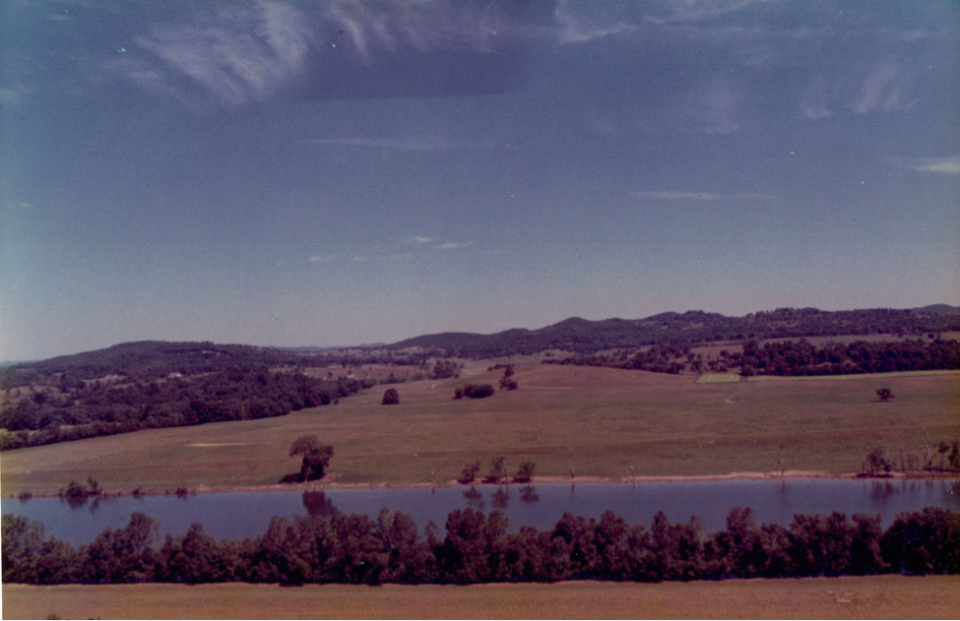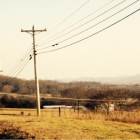Along US Highway 25, near Hartsville, Tennessee, a concrete cooling tower looms over the pastoral landscape. Built in the late 1970s by the Tennessee Valley Authority (TVA), a federally owned public power company and regional economic development agency, the tower is a remnant of what TVA envisioned as the world’s largest nuclear plant.
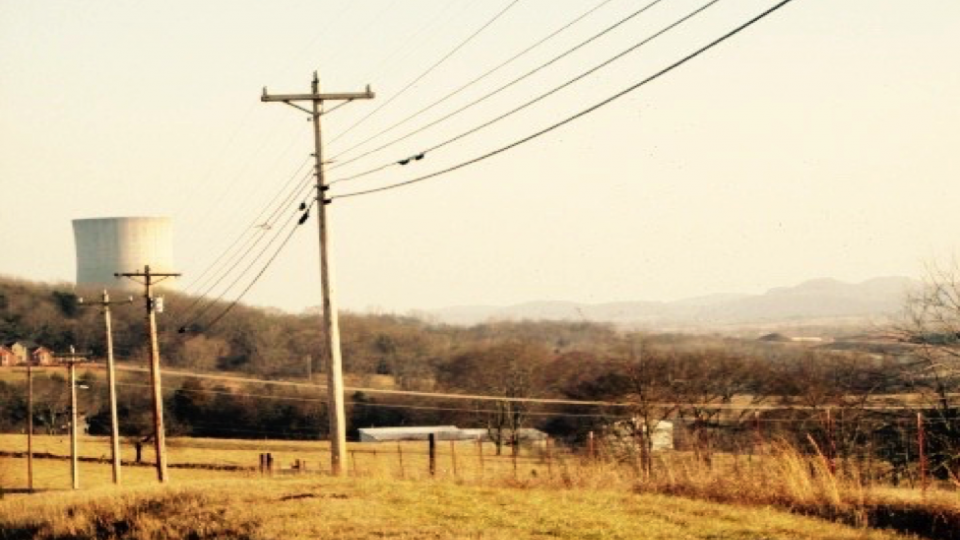
Approaching Hartsville site, Highway 25
Approaching Hartsville site, Highway 25
Credit: Caroline Peyton, 2015
 This work is licensed under a Creative Commons Attribution-NonCommercial-ShareAlike 4.0 International License.
This work is licensed under a Creative Commons Attribution-NonCommercial-ShareAlike 4.0 International License.
When Congress created TVA in 1933, its objectives included flood control, providing low-cost electricity, and fostering social transformation in the Tennessee Valley, a historically impoverished and underdeveloped region. By the 1970s, TVA’s priorities had shifted to producing cheap, abundant power, and the agency aggressively embraced nuclear energy in response. However, external and internal factors conspired against TVA’s nuclear visions; of the seventeen reactors planned, only six operate today. Some cancelled projects exist only as blueprints, while others are fragments dotting the valley’s landscape—curious monuments of metal, concrete, and vegetation. Hartsville’s nuclear ghosts are part of a broader history, beginning in the 1950s, when southern politicians promised “regional salvation” through the atom and encouraged extensive nuclear development in the American South. Shifting our gaze away from the atomic histories of western states more fully illuminates the expansive nature of the United States’s nuclear legacy and the debates it produced. These relics symbolize the uneven process of modernizing the Tennessee Valley, and by extension, the American South.
Examining Hartsville’s nuclear ruins reveals an enviro-technological controversy that pitted local knowledge and customs against TVA planners, whose cost-benefit analysis often obscured risks and consequences associated with nuclear power. While many residents, including area native and former Vice President Al Gore, supported the plant’s construction in the hopes of greater employment and economic development, others criticized TVA’s plan. Opponents levied common complaints against nuclear power, such as radiation exposure, but also viewed the project as destructive in more subtle ways. If nuclear power threatened lives, the plant also threatened a way of life, one intimately connected to the environment.

Hartsville nuclear site today
Hartsville nuclear site today
Credit: Amy Heiden, http://amyheiden.com
 This work is licensed under a Creative Commons Attribution-NonCommercial-NoDerivatives 4.0 International License.
This work is licensed under a Creative Commons Attribution-NonCommercial-NoDerivatives 4.0 International License.
Before TVA’s arrival, the Hartsville site contained farmland surrounded by woods. In the adjacent Cumberland River, fish species such as walleye and catfish thrived, and an abundance of waterfowl inhabited the area. For some locals, TVA’s environmental impact statement (EIS) underestimated the risks of thermal radiation, flooding, and catastrophic accidents. Residents Faith and William Dixon, along with other intervenors, alleged that the plant’s thermal radiation threatened an endangered mussel species: the pink mucket (Lampsilis orbiculata). Eradication of the area’s mussel population also meant the loss of local customs such as harvesting mussels, already a dying tradition as dams altered waterways.
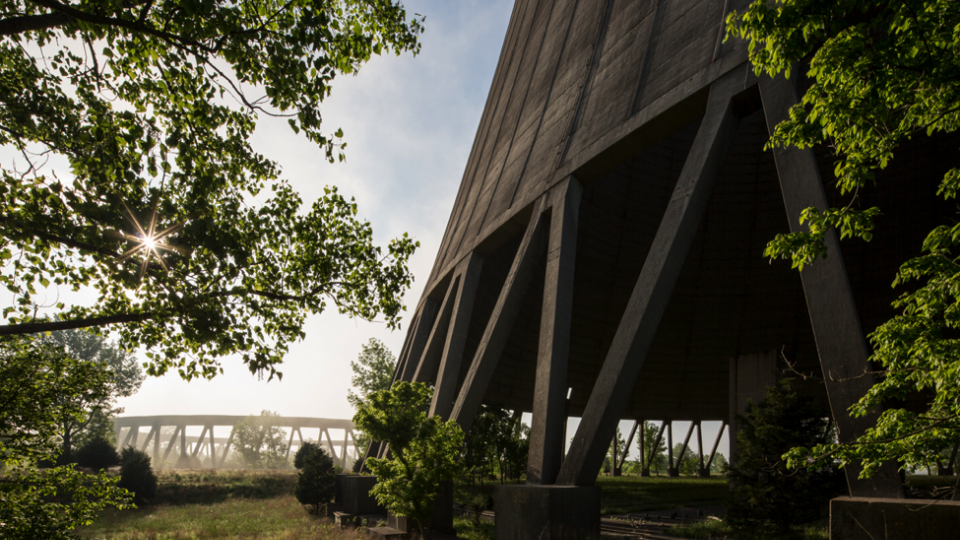
Hartsville’s cooling tower
Hartsville’s cooling tower
Credit: Amy Heiden, http://amyheiden.com
 This work is licensed under a Creative Commons Attribution-NonCommercial-NoDerivatives 4.0 International License.
This work is licensed under a Creative Commons Attribution-NonCommercial-NoDerivatives 4.0 International License.
The Hartsville project jeopardized local practices in other ways. The plant threatened the “blessings” of rural life, characterized by a sense of wildness and autonomy in environmental practices. One area resident, Linda Gentry, predicted in a letter to the editor of the Macon County Times published on 2 June 1975 that the project would result in “a locked-up experience,” where children could no longer wander freely. The project endangered the hallmarks of rural life: listening to whip-poor-will calls and chasing “possums, rabbits, and raccoons.” Another resident, Tom P. Thompson, Jr. questioned TVA’s failure to quantify the loss of communal hunting land in their EIS, challenged the agency’s assurances that waterfowl had ample habitat elsewhere, and feared the effects of radiation upon wildlife. Losing communal spaces and waterfowl habitats threatened the area’s ecology and the rituals of southern culture, particularly duck hunting. Mussel gathering and hunting waterfowl reinforced a deeper connection to the soil, to blood, and to the Cumberland River. Like the Tellico Dam, which altered the valley’s last “wild” river, TVA’s nuclear projects similarly emasculated the southern landscape, where government bureaucracies poached land through eminent domain and restricted community control of wildlife. In this sense, residents articulated a sophisticated understanding of how large-scale, high-risk technological systems transform, as Ursula Heise puts it, “the individual’s relationship to the local.”
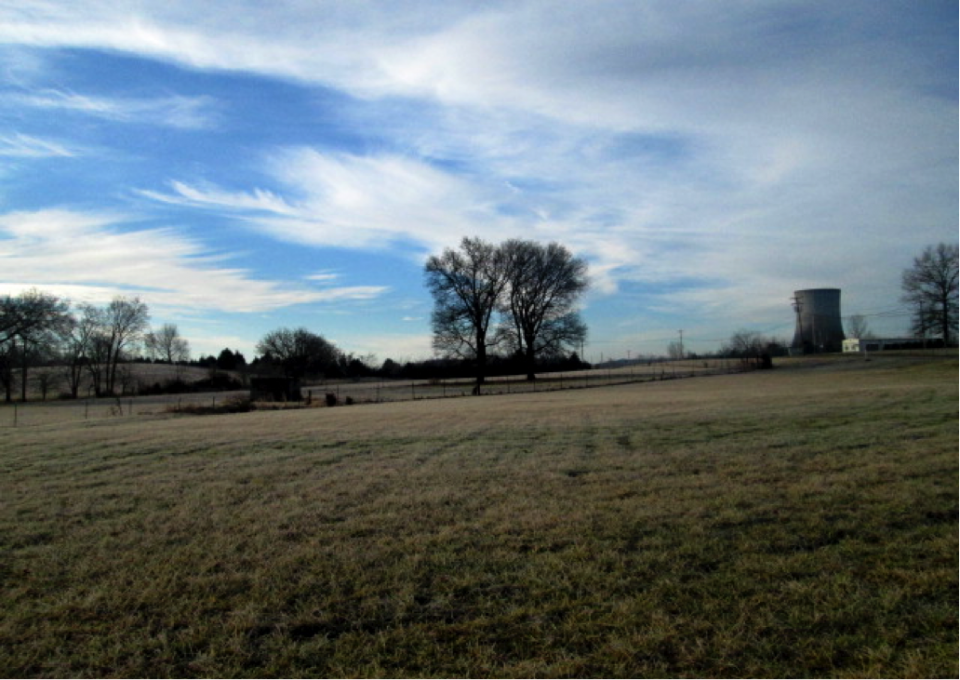
Hartsville site in 2015
Hartsville site in 2015
Credit: Caroline Peyton, 2015
 This work is licensed under a Creative Commons Attribution-NonCommercial-ShareAlike 4.0 International License.
This work is licensed under a Creative Commons Attribution-NonCommercial-ShareAlike 4.0 International License.
Despite objections, construction on the plant began in 1976, but TVA soon faced obstacles, such as rising costs and safety issues. In August 1984, after spending over four hundred million dollars, the agency cancelled the Hartsville project. Today, TVA owns much of the land; it has only sold a small parcel to an economic development group whose latest project is a privatized prison with scenic views. As for the cooling tower, locals derisively call it a “used beer can.” Pointedly, residents have employed a symbol that conjures images of the American South and “white trash,” those poor, white southerners in rural areas that encouraged TVA’s conception in 1933. Unlike a venerated ruin, a “privileged site of reflection…a favored image of a vanished past,” Hartsville’s tower evokes a less treasured product of modern society: trash. Ultimately, the ruins capture TVA’s conflicted identity, where the agency’s early “dreamers with shovels” promised a better life through economic development via cheap electricity, and the controversial practices that made TVA planners appear as plunderers, leaving behind cast-aside objects with little regard for the communities or the environments it altered.
Archival sources about the Hartville controversy are available at the National Archives-Southeast Region in Atlanta, Georgia: records of the Tennessee Valley Authority, RG 142. Newspaper sources have been collected by Betty C. Scott in Hartsville Nuclear Plant, 1973–2002: A Newspaper and Magazine Account of the Hartsville Nuclear Plant and Louisiana Energy Systems (Macon: Ridge Runner Publications, 2007).
How to cite
Peyton, Caroline. “Nuclear Ghosts and the Atomic Landscape of the American South.” Environment & Society Portal, Arcadia (Autumn 2015), no. 19. Rachel Carson Center for Environment and Society. https://doi.org/10.5282/rcc/7329.
ISSN 2199-3408
Environment & Society Portal, Arcadia
 This work is licensed under a Creative Commons Attribution-NonCommercial-ShareAlike 4.0 International License.
This work is licensed under a Creative Commons Attribution-NonCommercial-ShareAlike 4.0 International License.
2015 Caroline Peyton
This refers only to the text and does not include any image rights.
Please click on an image to view its individual rights status.
- Hargrove, Erwin C. Prisoners of Myth: The Leadership of TVA, 1933–1990. Princeton: Princeton University Press, 1994.
- Hecht, Gabrielle. The Radiance of France: Nuclear Power and National Identity after World War II. Cambridge, MA: MIT Press, 2009.
- Heise, Ursula. “Afterglow: Chernobyl and the Everyday.” In Nature, Culture, and Literature, vol. 3, edited by Catrin Gersdorf and Sylvia Mayer. Amsterdam: Rodopi, 2006.
- Hughes, Thomas Parke. American Genesis: A Century of Invention and Technological Enthusiasm, 1870-1970. Chicago: University of Chicago Press, 2004.
- Lilienthal, David E. TVA: Democracy on the March. 2nd ed. 1944. Reprint, New York: Harper & Brothers, 1953.
- Stoler, Laura Ann, ed. Imperial Debris: On Ruins and Ruination. Durham: Duke University Press, 2013.
- US Nuclear Regulatory Commission. Final Environmental Statement Related to Construction of Hartsville Nuclear Plant of the Tennessee Valley Authority. Washington, DC: US Nuclear Regulatory Commission, Office of Nuclear Reactor Regulation, 1975.


